In Steel Division: Normandy 44, you will have to create a battlegroup out of one of the 18 divisions we have modeled ingame and which took part in the battle of Normandy. Depending on the division’s type (armored, infantry, mechanized, airborne), history and TO&E (Table of Organization & Equipment), the troops and equipment available, the experience, … will vary.
Each week, we will detail here one of this division, starting today with what might be the most famous one from the Normandy campaign: the paratroopers from the American 101st Airborne Division, a.k.a the “Screaming Eagles“.
SCREAMING EAGLES
When the USA entered the war in late 1941, their standing army was limited to less than a dozen regular army infantry divisions and national guard units, the first armored divisions were still in their infancy … and airborne troops were limited to a few battalions. First experiments with airborne warfare had started in 1940 only, influenced by the successes of the German paratroopers in Belgium & the Netherlands.
The 101st Airborne Division was formed in Louisiana from August 19th, 1942, composed of the 502nd Parachute Infantry Regiment and 327th & 401st Glider Infantry Regiments, under the command of Brigadier General William C. Lee. Nicknamed the “Father of US Airborne”, Lee has as a Major in 1940 be the organizer of the first US airborne troops. Just one year after its creation, the division was shipped to Britain, were it was joined by two additional regiments, the 501st & 506th PIR (the latter of Band of Brothers‘ fame) and intensified its training for the upcoming invasion of Europe.
Unlike its sister division, the 82nd Airborne, which had performed combat jumps, glider assaults and fought as infantry in Algeria, Sicily & Italy, the Screaming Eagles had no combat experience as a unit priori to D-Day, although individual experienced cadres were passed from one division to another. One of them, and not the least, was the new division commander, Major General Maxwell D. Taylor, after General Lee (no pun intended) suffered a heart attack on February 1944 and couldn’t remain in command of the division.
Taylor was a veteran from 82nd Airborne, and a consummate soldier with a wide array of skills: graduated as an engineer officer, he transferred to the artillery, served in peacetime as diplomatic attaché in several Asian countries, was fluent in French & Spanish, volunteered for the airborne, then performed a secret mission in Italian territory for Eisenhower. Taylor overseen the 101st’s final training, and jumped with it for its baptism of fire in Normandy, being the first ever general to do so, and the first Allied general to touch French ground that day.
HEDGEROW HELL
The 101st Airborne Division‘s immediate objectives in Normandy were to secure the exit causeways from the Southern part of Utah Beach, as well as clearing the area between the beaches & the Douves river, over which it was also to secure or destroy several bridges. At a higher level, the division’s role was to secure the left flank of the invasion of the Cotentin Peninsula.
Yet, the jump didn’t go as planned. Despite Pathfinders being inserted ahead of the division to mark the drop zones, bad visibility at night, wind & German Flak combined to disperse the transport plane formations. For both 82nd & 101st Airborne Divisions, 75% of the paratroopers weren’t drop over nor even near their intended drop zone. Yet, despite darkness, chaos & disorganization, the American paratroopers managed to organize ad-hoc groups (often mixing men from both airborne divisions) and went on carrying their mission … or assigned themselves new ones within the “grand plan” when they had no means to accomplish theirs.
Yet, the dispersion of paratroopers had a positive consequence: the Germans couldn’t pinpoint the threat with precision, and thought the paratroopers had been dropped in much greater numbers to cover such a large area. Within a few hours, then days, the paratroopers regroupped and moved toward the Douves river, clearing resistance in their way. But by then, the Germans too were reorganizing and sending reinforcements, especially in the form of their own crack paratroopers: the 6. Fallschirmjäger-Regiment.
LIONS & EAGLES OF CARENTAN
American & German paratroopers had already met over the previous days, but never had they clashed as violently as in Carentan. Whom owned the village controlled a crossing over the Douves river at a stone’s throw away at La Barquette: the Americans needed to secure it to allow a swift expansion out of the beachhead as soon as the mechanized forces will have landed, the Germans to seal the beachhead long enough for their own reinforcements to join the fight. For both, time was of the essence.
The battle started on June 10th with the Screaming Eagles attacking with everything they had, yet the Germans held for two days, earning the nicknames “Lions of Carentan” in the process. On June 12th, the Fallschirmjäger had to fall back, running out of munitions … only to come back the next day backed by the 17. SS-Panzergrenadier Division. This combined battlegroup first hit the 501st PIR outside of Carentan, in a place later to be known as “Bloody Gulch”, forcing it to fall back in the town. Then the left flank of 506th PIR broke too and fled to the city, leaving the famous Easy Company to bear the brunt of the assault and hold (with the help of 2,/502nd PIR) until the timely arrival of the cavalry, in the form of tanks from 2nd Armored Division, fresh from Utah Beach.
After Carentan, the Screaming Eagles held their positions while newly landed divisions passed through their positions to expand the beachhead. Its mission accomplished, the division was shipped back to Britain to refit for the next airborne operation.
AFTER NORMANDY
The 101st Airborne Division amalgamated and trained replacements, but it wasn’t long before they jumped back into action. On September 17th, 1944, they took part in Operation Market Garden, in Holland, where it was tasked with the capture of five bridges, including a major one at Eindhoven. Although they met little resistance and secured 4 out of 5 bridges within the first day, the Screaming Eagles couldn’t prevent the destruction of the Son bridge, a major blow to the operation’s tight timetable.
Put in reserve again, the 101st was rushed back to the frontline, this time as regular infantry, as a reaction to the surprise German offensive in the Ardennes. The 101st took position at the strategic crossroad of Bastogne just a few days before the city was surrounded by the Germans on December 21st. In the absence of General Taylor, on leave in the USA for Christmas, the 101st (and other smaller units)’s defensive perimeter was under the command of General Anthony McAuliffe, the division’s second-in-command & artillery commander.
Despite being cut off and only intermittently re-supplied by air, the “Battered Bastards of Bastogne” held off and repelled any German assaults. And when the German sent an officer under a flag of truth to negotiate the city surrender, McAuliffe famously retorted a simple “Nuts!“. Bastogne held, and was relieved (not “saved”, for the paratroopers never admitted being in a position of needing being saved) on December 26th, by Patton’s army.
But this time, there was no pulling back from the line for some rest and refit. The division was immediately used as “leg infantry” to destroy as many German divisions as possible before they fell back within the Siegfried line. Only on January 18th were they relieved.
In the last month of the war, they moved to Southern Germany, in the Bavarian Alps, where they remain until the division was inactivated on November 30th, 1945.
The 101st airborne division ingame
Just like other light airborne divisions ingame, the 101st Airborne is at its best in Phase A, when it can be extremely aggressive. Its main assets are a numerous and versatile infantry, with both better firepower than regular riflemen and an anti-tank capacity. Although not laying as much firepower at long range as German Panzergrenadier (thanks to the latter twin MG 42!), the closer they get, the more the American get the upper hand when their Garand rifles & Thompson SMGs join the firefight.
Although left in England on D-Day, the Screaming Eagles ingame will be able to field some M22 airborne tanks. Although very lightly armored and only armed with a 37mm (same as on the M5A1), they provide the division with a welcome mobile group able to intervene quickly anywhere to support the infantry’s advance or to meet an enemy breakthrough.
With limited anti-tank capacity, the division will have a hard time waiting through Phase B, although getting armored support from attached M5A1 (Stuart) light tanks and a massive help from the USAAF! Nonetheless, it might best to remain on the defensive then and count of the artillery to break enemy offensive …
Finally, Phase C will bring some fresh air with an increase in air support and anti-aircraft artillery, but especially with the arrival with deadly and mobile M10A1 tank destroyers.
Note: Just like their German & British counterparts ingame, 101st Airborne‘s paratroopers (identified by wings on their unit cards) are unaffected by being on the wrong side of the frontline. For, as someone shrewdly observed …

![fig14[1]](https://eugensystems.com/wp-content/uploads/2017/03/fig141.jpg)
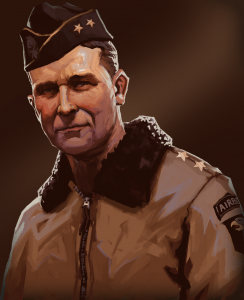
![8680187_orig[1]](https://eugensystems.com/wp-content/uploads/2017/03/8680187_orig1.jpg)
![Carentan[1]](https://eugensystems.com/wp-content/uploads/2017/03/Carentan1.jpg)
![hqdefault[2]](https://eugensystems.com/wp-content/uploads/2017/03/hqdefault2-300x225.jpg)
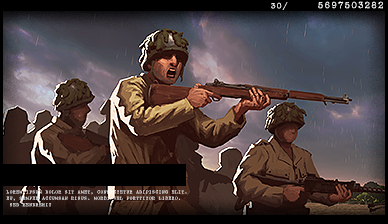

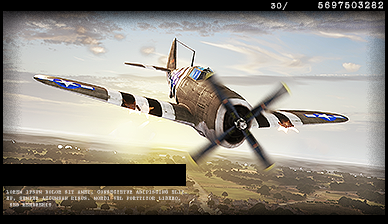
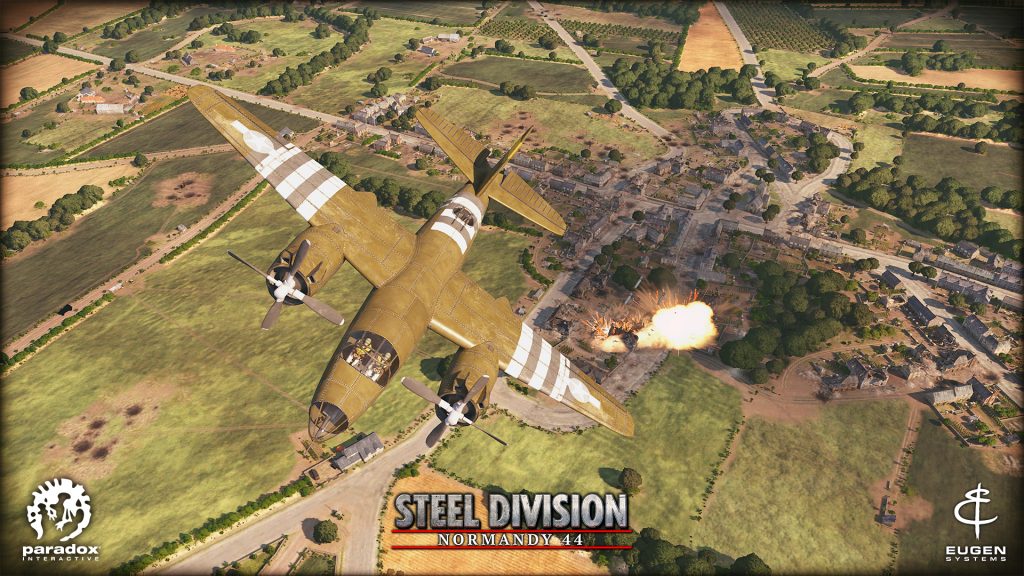
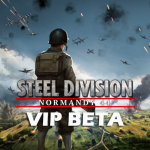
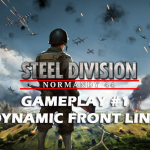
Sullian
March 15, 2017 at 6:28 pmNUTS !
AGSFunction1
March 15, 2017 at 7:29 pmCRACK OF THE LIGHTENING SPLITTING THE GROUND, THUNDER IS SOUNDING, ARTILLERY POUNDING..
Sullian
March 15, 2017 at 9:11 pmWRATH OF THE NAZI’S CAST ON BASTOGNE
FACING THEIR FORCES ALOOOOOONE!
Haechi
March 15, 2017 at 9:42 pmThis is seriously awesome!
MadMat, I’m a professional bilingual copywriter in advertisement and I can’t fail to notice a bunch of translation mistakes in this article. I’m a huge fan of Eugen System and I would LOVE to read proof your work for free.
Message me at rafael.riffiod@gmail.com if you’re interested.
Cheers
Sullian
March 15, 2017 at 10:03 pmI’m probably a bit paranoid, but it can be a bit risky to put your mail just here. You have to type your mail in order to post a comment, so Eugen probably has access to it if they need it.
Haechi
March 16, 2017 at 10:30 amWell, there are no edit options haha
Jay Smoove
March 16, 2017 at 6:34 amBuddy, you just wrote “read proof”. Sit the fuck down son.
Geronimo
March 20, 2017 at 3:17 pmDon’t be a jerk buddy.
[EUG]MadMat
March 17, 2017 at 4:16 pmSerais-je dans l’erreur si j’assumais que tu es français également? 🙂
Haechi
March 19, 2017 at 9:10 pmAucunement =]
Anthony Agnone
March 17, 2017 at 4:33 pmAs a para of the 60s, we went thru training at benning.can only imagine what it was like to take training for combat. Then…be asked to join invasion of Normandy and that long, cold march to carentan. Hoist tail boys, we’re going to bastogne and stay a month till butt freeze to the ground not to mention the tree bursts. God bless their memory and GOD bless the us army.
Combat Joe
March 17, 2017 at 9:00 pmPlease also develop a turn based version of this game.
Hopefully there is at least the OPTION to drastically slow down the game speed. RTS “hectic electric” fast games are no fun.
Thank you in advance.
Eric Lu
March 25, 2017 at 5:32 amthere is they demonstrated it in their gameplay reveal
Exploit
March 21, 2017 at 9:41 amVideo…
Exploit
March 21, 2017 at 9:42 amGameplay…
Thanks but you are discriminating against those who can’t read.